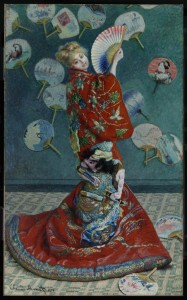NOTE: I’m going to focus on non-Japanese individuals wearing kimonos or dressing up as “geishas” just because I don’t want to make this post too long. I in no way want to imply that other cultures are not or should not be involved in this discussion!
Since it is halloween, I thought I would do a quick post on costumes that involve dressing up as other cultures. Many individuals who do this say that they are simply showing appreciation for a culture, and that there is nothing offensive about their actions. There are some cases where this is blatantly untrue, and it is obvious they are simply using another culture to establish a certain aesthetic without putting any thought or care into how the other culture is presented (the most notable example of this being Katy Perry’s AMA performance in which she dressed up as a geisha, which these two articles both discuss in more depth).
Many activists (rightfully) claim that this crosses the line from cultural appreciation into appropriation, and that their culture is more than just a costume. The Boston MFA, with it’s “Kimono Wednesday’s” event, was recently the center of one such debate. (For those of you not familliar with the issue, the Boston MFA hosted an event in which patrons could dress in a kimono similar to the one worn in Claude Monet’s La Japonaise. This article discusses the controversy surrounding the event.)

Claude Monet’s painting, La Japonaise, which was part of an exhibit that sparked outrage at the Boston Museum of Fine Arts
While there are a lot of nuances in that specific scenario (all of which boil down to japonisme and orientalism which I am going to talk about, but in a seperate blog post because man, I get very passionate about art history and how it affects the relationship between cultures), the most important takeaway–at least for me–is how divided many Asians are on this issue. While there are some who claim this is inexcusable appropriation and should be stopped immediately, there are others who claim that the event was breaking down cultural barriers. (This tumblr post explains this issue a little more, caveat being it’s from tumblr)
The line between cultural appreciation and appropriation is very thin, and in many cases entirely subjective. It’s a complex issue, and I don’t claim to know everything about it. What I do find interesting, though, is how these ideas influence our perceptions of beauty, and what constitutes attractiveness. I’m going to be talking more about the implications of appropriation vs. appreciation next week, I just wanted to post this first as a sort of primer.
One final note: This is a store located in Tokyo, whose primary role is to allow foreigners (specifically non-Japanese/non-Asian foreigners) to dress up in Kimono and walk around the neighborhood. From what I can tell, the mission statement is to give foreigners a chance to wear kimono properly–that is, putting them on correctly and wearing them in the proper style. While not perfect, I think it’s interesting that this store is giving foreigners permission (and help) to dress in kimono in a fairly non-offensive way.
As always, comments are lovely! I would really like to see how other people feel about these issues.
[EDIT 11/24: Added pictures]
